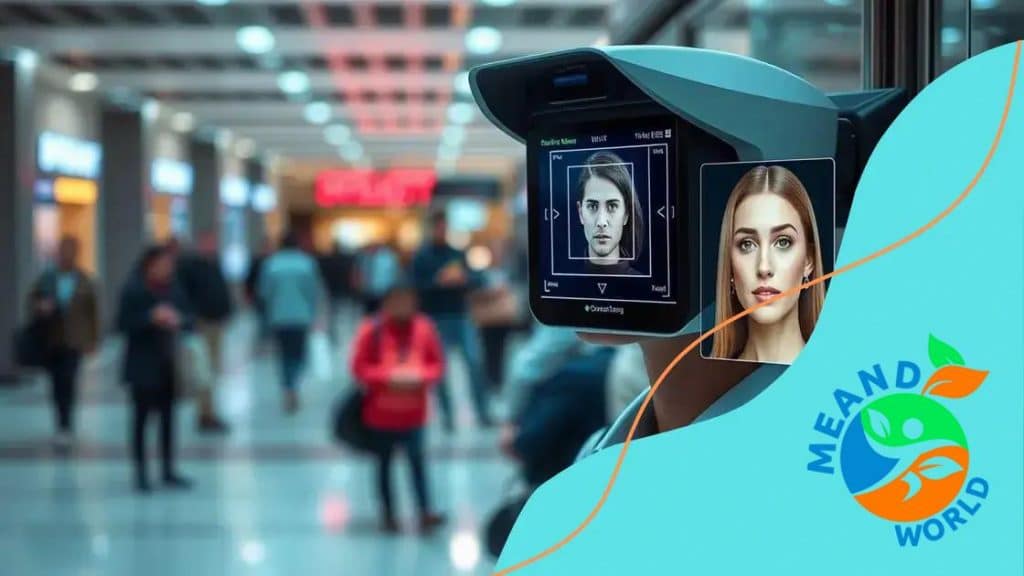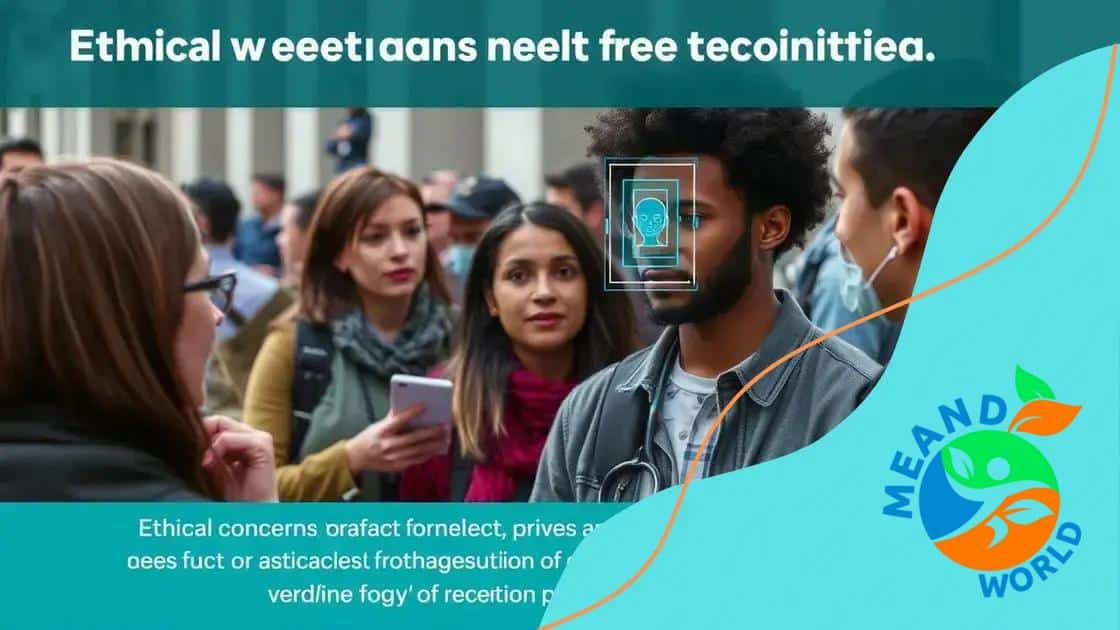The role of facial recognition in enhancing public safety

Anúncios
The role of facial recognition in enhancing public safety is significant, as it allows for quick identification of individuals, improves law enforcement efficiency, and ensures a safer environment while addressing privacy and ethical concerns.
The role of facial recognition in enhancing public safety has sparked discussions globally. Imagine a world where technology not only identifies threats but also improves everyday safety for us all.
Anúncios
Understanding facial recognition technology
Understanding facial recognition technology is essential in today’s digital age. This technology allows for the identification of individuals based on their facial features. It uses algorithms that can analyze a person’s unique facial patterns.
Anúncios
Facial recognition systems can be found in various settings, including airports, public events, and even smartphones. The rise of this technology has changed the way we approach security and convenience in our daily lives.
How Facial Recognition Works
The process begins with capturing an image of a face. This image can be taken from a photo, video, or camera. After capturing, several steps are followed:
- Detection: The software detects a face in the image.
- Analysis: Key features are analyzed, focusing on distances between eyes, nose, and mouth.
- Comparison: The features are compared with a database to find a match.
This method provides quick identification, making it useful for law enforcement and public safety. However, it also raises questions about privacy and consent.
Applications of Facial Recognition
Facial recognition technology has a wide range of applications including:
- Security systems in airports for faster boarding.
- Surveillance cameras that help police track suspects.
- Mobile devices securing personal data through facial unlock features.
While the technology offers many benefits, it is crucial to address ethical concerns linked to its use. How this data is stored and who has access to it are pivotal issues.
In conclusion, understanding facial recognition technology helps highlight its potential and challenges. As we navigate this evolving landscape, staying informed will empower us to engage with this technology responsibly.
Benefits of facial recognition in public safety
Benefits of facial recognition in public safety are becoming increasingly clear as technology advances. This powerful tool helps enhance security measures and improve response times in emergencies.
One significant advantage is the ability to quickly identify individuals in crowded places. This can be crucial during events such as concerts or large gatherings. By recognizing faces, law enforcement can monitor potential threats more effectively.
Key Benefits
The benefits of using facial recognition technology in public safety include:
- Faster identification: Recognizing suspects quickly can help prevent crimes before they happen.
- Enhanced surveillance: Cameras equipped with this technology can track movements and alert authorities to suspicious behaviors.
- Data-driven decision making: Gathering data on identified individuals helps law enforcement understand patterns and improve community safety.
Additionally, facial recognition can streamline processes in various sectors. For example, in transportation hubs, it allows for faster screening at security checkpoints. This not only improves safety but also enhances the overall travel experience.
Despite its benefits, implementing facial recognition in public safety must be done carefully. It’s essential to address concerns about privacy and misuse of data. By being transparent and ensuring proper regulations, public trust can be maintained.
Ultimately, the potential of facial recognition technology to bolster public safety is significant. As communities embrace these advancements, they can foster safer environments for everyone.
Ethical concerns surrounding facial recognition

Ethical concerns surrounding facial recognition are crucial to consider as this technology becomes more widespread. While facial recognition offers many benefits, it also raises significant questions about privacy and surveillance.
One major ethical issue is consent. Many people are unaware that their faces may be scanned and stored without their permission. This lack of consent can lead to violations of individual privacy rights. Additionally, there is a risk that data collected can be misused or accessed by unauthorized parties.
Privacy Issues
Facial recognition technology can track individuals without their knowledge. This constant monitoring creates an environment where people feel they are always being watched. Privacy advocates argue that this undermines personal freedom and can lead to a chilling effect on public expression.
- Potential for misuse: Data can be misused for wrongful accusations or profiling.
- Lack of transparency: Many systems operate without clear guidelines on data usage.
- Algorithmic bias: Facial recognition systems can misidentify individuals, leading to unfair treatment.
Moreover, communities of color often bear the brunt of these bias issues. Research shows that facial recognition technology has higher error rates for people with darker skin tones. This raises concerns about discrimination and fairness in law enforcement practices.
Another ethical consideration is the balance between security and civil liberties. While facial recognition can enhance public safety, it is essential to ensure that it does not infringe upon basic human rights. Policymakers must create regulations that protect citizens while allowing law enforcement to do their jobs effectively.
Real-world applications of facial recognition
Real-world applications of facial recognition demonstrate the versatility and effectiveness of this technology across various fields. From security to personal devices, facial recognition systems are making our lives easier and safer.
In law enforcement, facial recognition helps identify suspects quickly. For example, police can use this technology during investigations to match faces from surveillance footage with known criminals. This efficiency can lead to quicker arrests and enhanced public safety.
Applications in Different Industries
Facial recognition technology is not limited to law enforcement. It has several practical applications, including:
- Retail: Stores use facial recognition to analyze customer demographics and personalize marketing efforts.
- Healthcare: Facilities employ this technology for patient identification, ensuring accurate medical records.
- Travel: Airports use facial recognition for security checks, speeding up the boarding process and enhancing safety.
- Banking: Some financial institutions utilize facial recognition for secure identity verification when customers access their accounts online.
Facial recognition also plays a significant role in personal devices, like smartphones and laptops. Many people use facial recognition to unlock their devices, adding an extra layer of security to sensitive information.
While the benefits of facial recognition are numerous, its implementation must be handled carefully. Ensuring user consent and addressing privacy concerns is essential as we incorporate this technology into everyday life. Overall, the real-world applications of facial recognition are expanding rapidly, changing how we interact with our environment.
Future trends in facial recognition and public safety
Future trends in facial recognition and public safety are shaping how we will interact with technology in the coming years. As the technology continues to evolve, its integration into public safety strategies is expected to grow.
One of the most promising trends is the use of artificial intelligence (AI) to enhance facial recognition systems. AI can improve the accuracy of facial recognition by reducing errors, especially in identifying individuals from diverse backgrounds. This advancement can help ensure a more equitable application of the technology.
Innovations on the Horizon
Several innovations are likely to emerge, including:
- Real-time monitoring: Advanced systems will allow for live facial recognition in public areas, enhancing security measures.
- Integration with other technologies: Facial recognition will increasingly be combined with other technologies, such as drones and sensors, to create a comprehensive safety net.
- Enhanced privacy controls: Future systems may incorporate features that allow individuals to opt-out of facial recognition databases, addressing privacy concerns.
Moreover, the focus on ethical practices will likely drive regulatory changes. Policymakers could implement stricter guidelines to govern the use of facial recognition technology, ensuring it serves the public interest while protecting individual rights. These regulations may promote transparency by requiring organizations to disclose how data is collected and used.
As we look to the future, developing trust between the public and law enforcement is crucial. Community engagement and dialogue about facial recognition technology can help address concerns and build a cooperative environment. These future trends in facial recognition signal a shift towards enhanced public safety while prioritizing ethical considerations.
FAQ – Frequently Asked Questions about Facial Recognition and Public Safety
How does facial recognition technology enhance public safety?
Facial recognition technology helps identify potential threats quickly, allowing law enforcement to respond effectively to incidents.
What are the privacy concerns associated with facial recognition?
Privacy concerns include the lack of consent for data collection and the potential for misuse of collected data, leading to unauthorized surveillance.
What industries are using facial recognition technology?
Facial recognition is used in various industries, including law enforcement, retail, healthcare, and transportation, enhancing security and efficiency.
What is the role of AI in facial recognition systems?
AI improves the accuracy of facial recognition systems by reducing errors, particularly when identifying individuals from diverse backgrounds.





